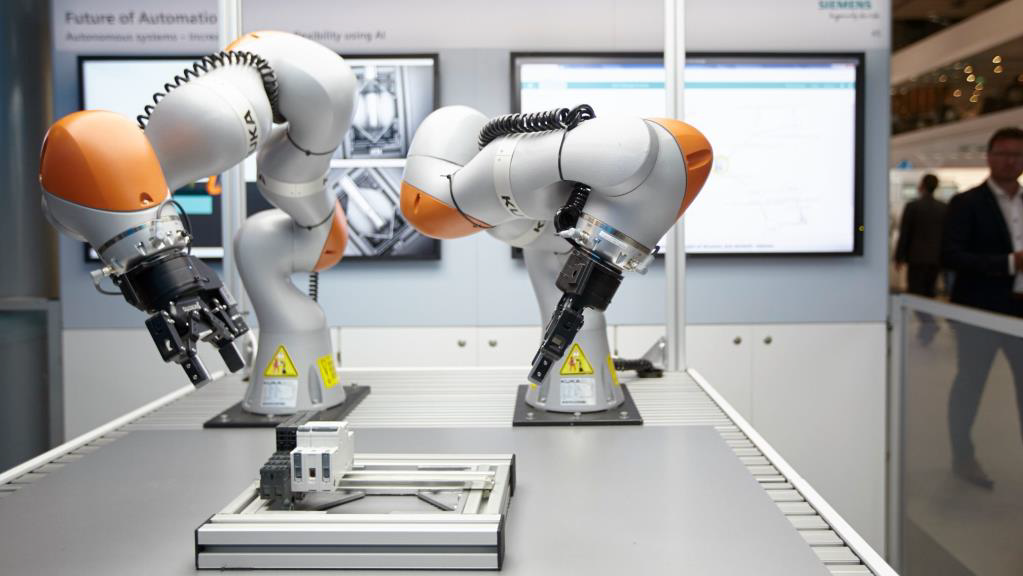In the realm of technology, few fields hold as much promise and potential for transformative change as advanced robotics and automation. From revolutionizing manufacturing processes to enhancing healthcare, transportation, and beyond, robotics and automation technologies are reshaping industries, driving innovation, and redefining the way we live and work. In this expansive exploration, we delve into the intricacies of advanced robotics and automation, uncovering their impact, applications, and future possibilities.
1. Defining Advanced Robotics and Automation:
Advanced robotics refers to the development and application of robotic systems equipped with sophisticated capabilities such as artificial intelligence (AI), machine learning, computer vision, and advanced sensors. Automation, on the other hand, involves the use of technology to perform tasks with minimal human intervention, often leveraging robotics, AI, and other cutting-edge technologies to optimize efficiency and productivity.
2. Key Components and Technologies:
- Artificial Intelligence (AI): AI plays a central role in advanced robotics and automation, enabling robots to perceive, learn, adapt, and make decisions in real-time based on data and sensory inputs.
- Machine Learning: Machine learning algorithms empower robots to improve performance and functionality over time through experience and exposure to new data, allowing them to optimize operations and adapt to changing environments.
- Computer Vision: Computer vision technology enables robots to interpret and analyze visual information from their surroundings, facilitating tasks such as object recognition, navigation, and quality control in manufacturing.
- Advanced Sensors: Robotics and automation systems rely on a variety of sensors, including LiDAR, radar, ultrasonic sensors, and depth cameras, to perceive and interact with their environment accurately.
3. Applications of Advanced Robotics and Automation:
- Manufacturing: Advanced robotics and automation have revolutionized manufacturing processes, driving increased efficiency, precision, and flexibility in production lines. Robotic arms, cobots (collaborative robots), and autonomous mobile robots (AMRs) work alongside human workers to assemble products, handle materials, and perform repetitive tasks with speed and precision.
- Healthcare: In healthcare, robotics and automation technologies are transforming patient care, surgery, and rehabilitation. Surgical robots assist surgeons with minimally invasive procedures, while robotic exoskeletons and rehabilitation robots aid in physical therapy and mobility assistance for patients with disabilities.
- Logistics and Warehousing: Automation technologies such as autonomous drones and robotic warehouse systems are revolutionizing logistics and warehousing operations, enabling faster order fulfillment, inventory management, and distribution in e-commerce and retail sectors.
- Agriculture: Agricultural robotics, including autonomous tractors, drones, and robotic harvesters, are enhancing productivity, precision, and sustainability in farming operations. These technologies enable farmers to monitor crops, apply fertilizers and pesticides, and harvest produce more efficiently, reducing labor costs and environmental impact.
4. Challenges and Considerations:
- Safety: Ensuring the safety of humans working alongside robots is paramount, particularly in collaborative environments where humans and robots interact closely. Implementing robust safety protocols, risk assessments, and protective measures is essential to mitigate the risk of accidents and injuries.
- Ethical and Social Implications: Advanced robotics and automation raise important ethical and social questions, including concerns about job displacement, economic inequality, and the ethical use of AI in decision-making processes. Addressing these issues requires thoughtful consideration and proactive measures to ensure that technology serves the greater good and benefits society as a whole.
- Interoperability and Integration: Integrating diverse robotics and automation systems into existing workflows and ecosystems can present challenges related to interoperability, compatibility, and standardization. Developing open-source platforms and interoperable interfaces can facilitate seamless integration and collaboration between different systems and technologies.
5. Future Trends and Possibilities:
- Human-Robot Collaboration: The future of advanced robotics and automation lies in human-robot collaboration, where robots work alongside humans as trusted partners, augmenting human capabilities and enhancing productivity.
- Robotic Swarms: Robotic swarms, consisting of multiple autonomous robots working together in coordinated fashion, hold promise for applications such as disaster response, environmental monitoring, and exploration of hazardous or inaccessible environments.
- Soft Robotics: Soft robotics, inspired by natural organisms and materials, is an emerging field that focuses on developing robots with flexible, deformable bodies capable of delicate manipulation and interaction with complex environments.
6. Conclusion:
In conclusion, advanced robotics and automation represent a transformative force that is reshaping industries, revolutionizing workflows, and redefining the way we interact with technology. By harnessing the power of AI, machine learning, and advanced sensors, robotics and automation technologies are enabling new possibilities and unlocking unprecedented levels of efficiency, productivity, and innovation across diverse sectors. As we navigate the opportunities and challenges of this rapidly evolving field, it is essential to approach advancements in robotics and automation with foresight, responsibility, and a commitment to harnessing technology for the greater good. With ongoing innovation, collaboration, and ethical stewardship, we can unlock the full potential of advanced robotics and automation and build a future where humans and robots work together harmoniously to create a better world for all.
